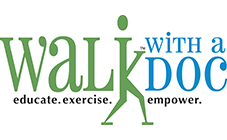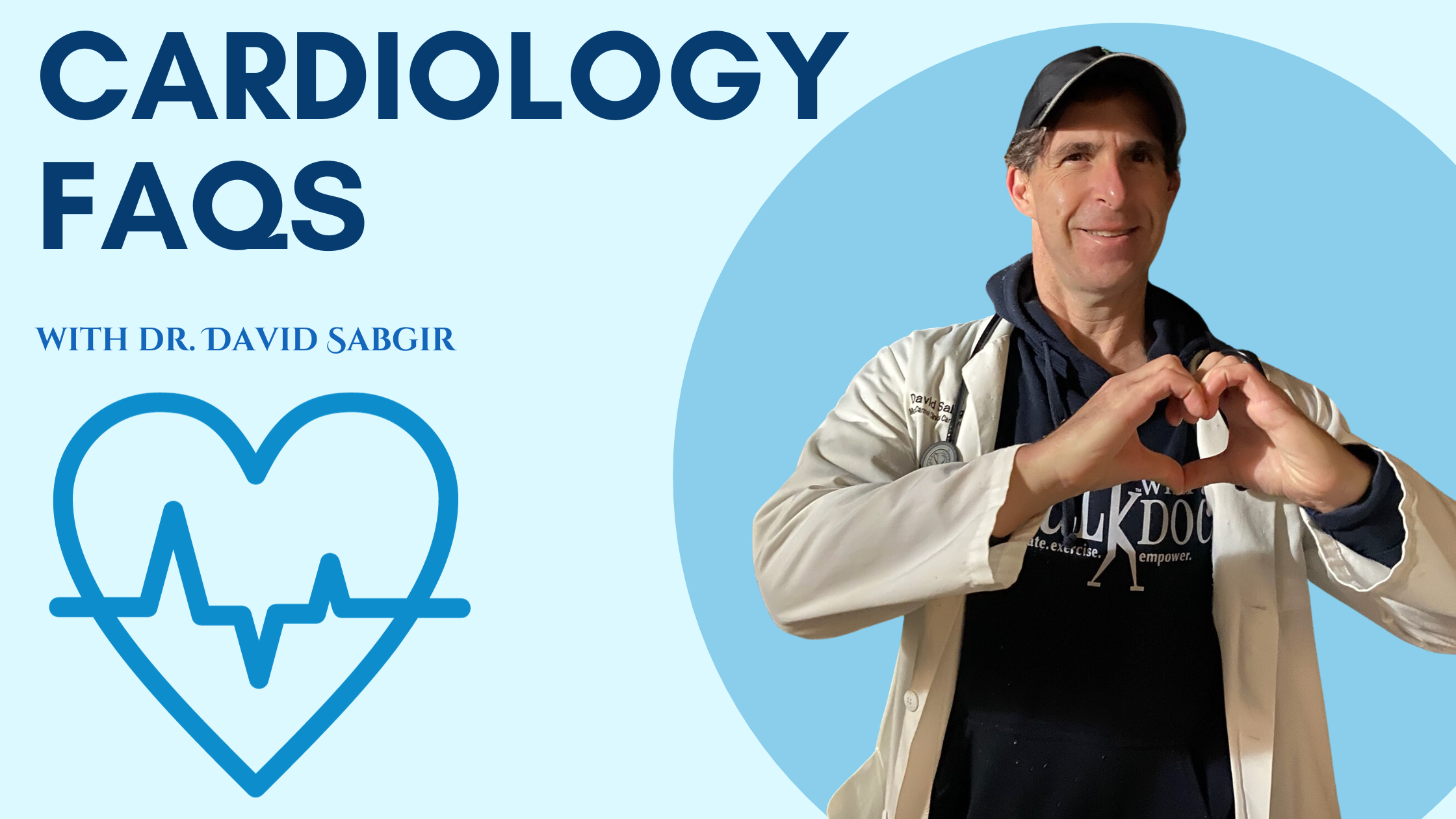Good morning!
We were with friends the other night when a couple of cardiology questions came up. It reminded me how similar/confusing the following terms can be. We always strive to have our Walk with a Doc teammates as knowledgeable as possible, and this seemed like a good platform to introduce/review these terms. As always, please keep in mind that if you walk 150 minutes or more/week these terms may be more for curiosity’s sake. Why? Because you probably have gone a long way in reducing factors (a, b, c, d, e, f, and g). Exercise = Miracle Drug = Fountain of Youth
FAQs (We love this stuff)
You mention risk factors. What are they again?
These are major cardiac risk factors:
(a) Smoking
(b) High blood pressure
(c) High LDL (bad chol)
(d) Low HDL (good chol)
(e) Diabetes
(f) Physical inactivity
(g) Obesity/overweight
(h) Age
(i) Family history
Ok, here are the terms:
1. Heart cath/angiogram/cardiac catheterization:
These are all the same thing.
This is a purely diagnostic test in the sense that with this test we are just ‘taking a look’. We thread a skinny catheter over a wire that has been introduced into the body. This is usually done through either the femoral artery or the radial artery. Most of the time (read: not always), the femoral artery is chosen over the radial as it can be easier to manipulate the catheter angle and place a stent if need be.
2. Stents:
These are often described as looking like the spring inside a pen. These hold the plaque (atherosclerosis) against the wall and allow the blood to flow without restriction.
3. So what’s a balloon?
Good question. Let’s say the catheter sees a blockage/narrowing/stenosis after injecting the dye/contrast. Then that same catheter is removed and another catheter with a tiny balloon is threaded over the same wire. With the help of fluoroscopy (x-ray), the balloon is placed directly at the site of the blockage and then expanded. This presses the plaque against the wall. Until 1994 (introduction of stents) this was all we had and it didn’t work that well. The cardiologists back then would see up to a 50% rate of restenosis (would block back up). Stents reduced restenosis to 30-ish% and drug-eluting stents (DES) brought that WAY down to around 5-10% (depending on the study). There are still rare times when we can’t use/opt not to use stents and that procedure is now often referred to as POBA (Plain Old Balloon Angioplasty).
4. What’s an angioplasty?
That’s the therapeutic procedure. Angiogram – take a look; Angioplasty – fix the problem (with a balloon, or a balloon and a stent). Other terms that have been used just to make this confusing and mean the same thing are PCI (Percutaneous Coronary Intervention) and PTCA (Percutaneous Transluminal Coronary Angioplasty).
5. What’s the recovery after a stent? It’s pretty quick. You can usually get up and walk around shortly after the procedure. In most cases, your doctor will put you on a blood thinner (in addition to aspirin) for anywhere from 12-30 months.
6. Heart attack = myocardial infarction = MI = had a ‘coronary’: This is when a coronary artery (arteries that sit on top of the heart) is blocked and the blood is unable to pass. Then the muscle downstream from the blockage doesn’t get oxygen and dies.
7. Does that ever come back?
No, it becomes scar tissue.
But, sometimes we develop collaterals or God’s bypasses. At times, when an area of the heart is not getting enough oxygen our body will release VEGF (vascular endothelial growth factor) and the heart will carve/tunnel out these new blood vessels. Very cool. VEGF often prevents or limits the size of heart attacks.
8. Where do I buy VEGF? I would like some.
You ‘buy’ it at Walk with a Doc, my friend. VEGF is a protein released from cells in increased volumes when you go for a walk/exercise.
We hope this generates some questions. If you have some, please bring them up with your doctor tomorrow morning at a Walk. If you do not have a WWAD program in your area, feel free to reply to this email with your question(s) and we will answer the most common ones in next week’s newsletter.
You are awesome.
david


